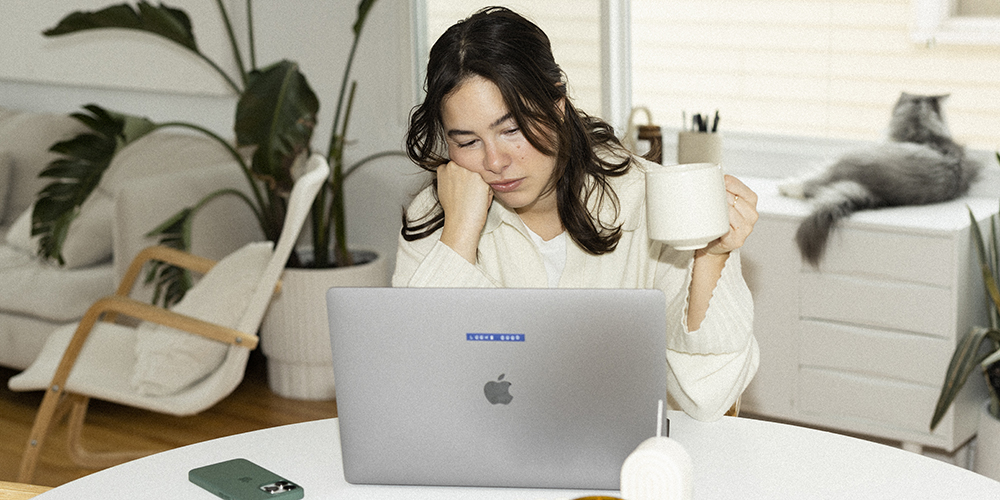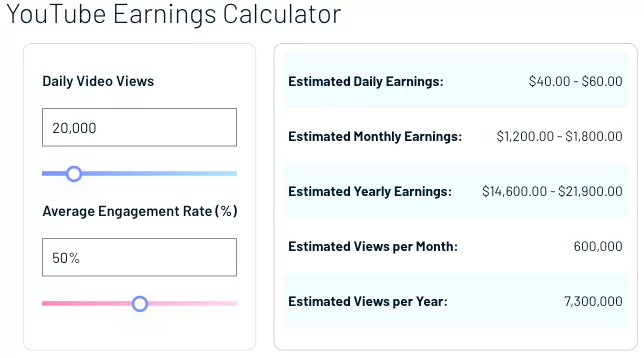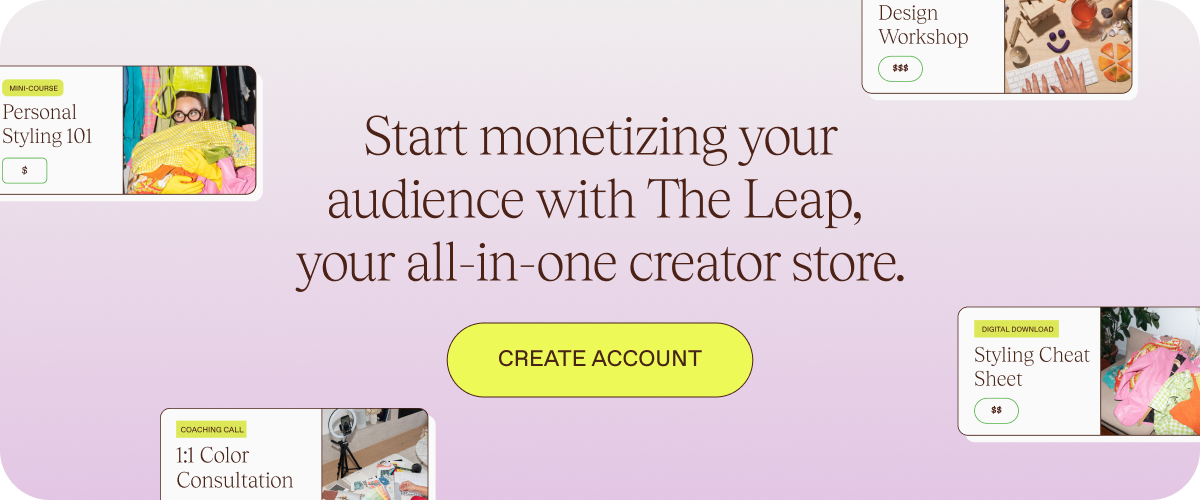YouTube is one of the best, most expressive platforms for creators, and they take their role as a vanguard of the creator industry very seriously. To ensure excellent, unique content across the platform, the team has built stringent policies around duplicate content — especially for users utilizing YouTube’s Partner Program.
The YouTube reused content policy is strict, but it’s clear and simple to adhere to.
If your YouTube channel is flagged for duplicate content, you may be suspended from the YouTube Partner Program. That means your channel is stripped of its monetization status, and your income stream dries up overnight.
Don’t stress: we’re on the case. Here is a breakdown of the steps you can take if you find yourself suspended from the YouTube Partner Program due to reused content claims. In this article, we’ll cover the basic premise of what YouTube considers to be reused content, then on to the appeal process, and finally how to land your reapplication to the Partner Program. Let’s get into it!
What is the YouTube reused content policy?
YouTube defines “reused content” as any channel repurposing another creator’s work without adding significant original commentary or other educational value. In short, you can’t monetize duplicate content that doesn’t feature any original element.
If you have multiple videos that violate the YouTube reused content guidelines, your entire channel may be suspended from the YouTube Partner Program.
Your content could get flagged by the YouTube reused content policy if it contains any third-party content, including:
- Copyrighted content.
- Content uploaded from other YouTube creators.
- Royalty-free music.
- Public domain footage.
If you’re using third-party content on your YouTube channel, you run the risk of getting caught by YouTube’s strict reused content policy.
Can reused content be monetized on YouTube?
YouTube allows creators to monetize reused content only if there’s a clear difference between the original video and the reused content.
This includes:
- Reaction videos: Try adding a funny or thoughtful spin to the original video by editing footage from it and including your own take on the events.
- Critical reviews: Build your audience and strengthen your brand by offering critical commentary.
- Edited footage with voiceovers: Add commentary, or break the form entirely with narrative short videos.
- Videos with a clear narrative or educational component: Use other people’s content as an example to illustrate your point or idea.
You cannot monetize content that doesn’t involve the above types of modifications. This includes:
- Clips of a TV show edited into a compilation.
- Collections of songs from artists.
- Promotion of other creator’s content.
These rules apply regardless of whether you have permission from the original creator or artist. YouTube reserves the right to suspend your Partnership affiliation regardless of what you may deem a meaningful difference or context.
What to do if you’re suspended from the YouTube Partner Program
Getting suspended from the YouTube Partner Program (YPP) might make you panic. Bust out the paper bag — there are steps you can take to get your monetization back on track. Deep breaths.
How to appeal your suspension for resolution
YouTube gives creators the chance to appeal their reused content suspension. To appeal your suspension, sign into your YouTube Studio and upload a short appeal video.
Your appeal video should be unlisted and uploaded to the channel in question. You can find the link to the appeal process in your channel monetization overview under “Earn.” Enter the URL of your appeal video and submit.
Make sure your appeal video includes:
- How your content was filmed: Did you compile a montage of other users’ work? Or did you take your iPhone to the parking garage to film that sweet skate trick?
- How your content was edited: Whether you cut entirely in camera or used a professional editing software, YouTube will want to understand how you’ve made someone else’s content your own.
- An image or video of you onscreen, or a voiceover: Demonstrate to the appeals team that you’re a person trying to build an audience, not a bot trying to steal views.
You need to demonstrate how you’ve edited and filmed the content on your channel to convince YouTube that your content falls within its AdSense program policies.
YouTube requires creators to submit their appeal within 21 days of suspension. After you’ve submitted your appeal, YouTube will review the video and issue its decision within 14 days.
If your appeal is successful, YouTube will re-approve your channel for YPP, and turn your monetization back on. It may take up to 30 days for your monetization to be reinstated.
Can you reapply for the YouTube Partner Program and monetization?
In short: yes. You can reapply for the YouTube Partner Program and monetization 30 days after your account is suspended, or if your YPP application is rejected.
If your suspension appeal is rejected, you can reapply for YPP once again 30 days after the suspension date. So, if at first you don’t succeed, film another appeal video.
How to avoid further suspensions from YouTube Partner Program
YouTube is one of the hottest creator platforms around right now — but to make your YouTube channel a success, you need to watch out for the reused content policy. If you get caught passing off someone else’s content, it can have serious consequences for your channel and your business, especially if you’re repeatedly suspended from the YPP.
Thankfully, there are ways you can appeal the decision and work around it, including finding other strategies for monetization.
1. Add your voice and your face to your videos
To avoid repeated suspensions from YouTube, make sure that your content always includes your presence. Add your voice and/or your face to your YouTube videos to make it clear that you’re creating original content — even if you’re reacting to a well-trod video. Show YouTube that you’re a real person striving to produce their own original work.
Whenever you’re including third party content in your videos, find a way to be present throughout your videos to avoid them being flagged. YouTube’s copyright enforcement teams pay close attention to reused content.
2. Add a voice narrative to the video
You can use voiceovers can to prevent your videos from being flagged by the YouTube reused content policy.
For example, you can add a commentary on top of third-party content with unique content and text. Think comedic commentary, thoughtful analysis, or critical reviews of other creators’ videos.
It’s not enough to just add a short intro or outro — you need to have a voiceover running for the majority of your individual videos to comply with the reused content rules.
3. Use text-to-speech software to generate voiceover
As well as using your own voice to narrate your YouTube videos, you can also opt for text-to-speech voice software to generate voiceover content.
Text-to-speech software reads your text aloud in a synthesized voice, so it’s ideal for camera-shy creators.
The rise of TikTok has made such effects trendy — you might even enjoy a new audience that you hadn’t anticipated as a result of trying this out.
Look for other forms of monetization
AdSense isn’t the only type of monetization you can use for your YouTube channel. If you’re sick of your account being suspended, or you’re struggling to get approved for the YPP, it might be time to look into alternative monetization strategies.
If you find that you’re continually getting blocked by YouTube’s reused content policy, you might want to sacrifice AdSense in favor of a different form of monetization, such as:
- Brand sponsorships
- Selling online courses and digital products
- Paid membership sites
- Online community platforms
These efforts will offer you more flexibility in terms of utilizing someone else’s content, but lack the plug-and-play ease of the YPP.
Consider affiliate marketing as another income stream
Affiliate marketing is a hugely popular and lucrative way to monetize your YouTube channel — and it doesn’t involve wrestling with the YouTube reused content policy. If your content doesn’t fit with YouTube’s YPP guidelines, consider using affiliate marketing as an alternative.
Join an affiliate marketing program to earn money from viewer referrals. Every time you send a follower to a brand’s product page via your affiliate link and they make a purchase, you earn a commission.
Look out for products that are relevant to your niche and your target audience for best results. You can also offer your followers a discount or promotional code.
Keep creating!
YouTube Partner Program reward highly original creators, but stringent policies don’t always make the right decisions.
While the YouTube Partner Program is an excellent way to monetize your channel, so is a great social media presence. Rather than worrying about YPP’s oversight, see what your audience loves the most about your work. Focus on how you can leverage that to monetize your content in other ways.
If you’re a creator who’s looking to sell digital products and services so that you have more freedom and stability to create fulfilling content for both you and your audience, then The Leap is the only option that gives you that power.
With The Leap, creators can build digital products and an online storefront in no time and for zero dollars. If that’s not music to a creator’s ears, we don’t know what is.
Ready to create and sell your own digital products? Try The Leap for free today!
Follow The Leap on TikTok, Instagram, and YouTube for more monetization tips for creators. We also make a newsletter.







